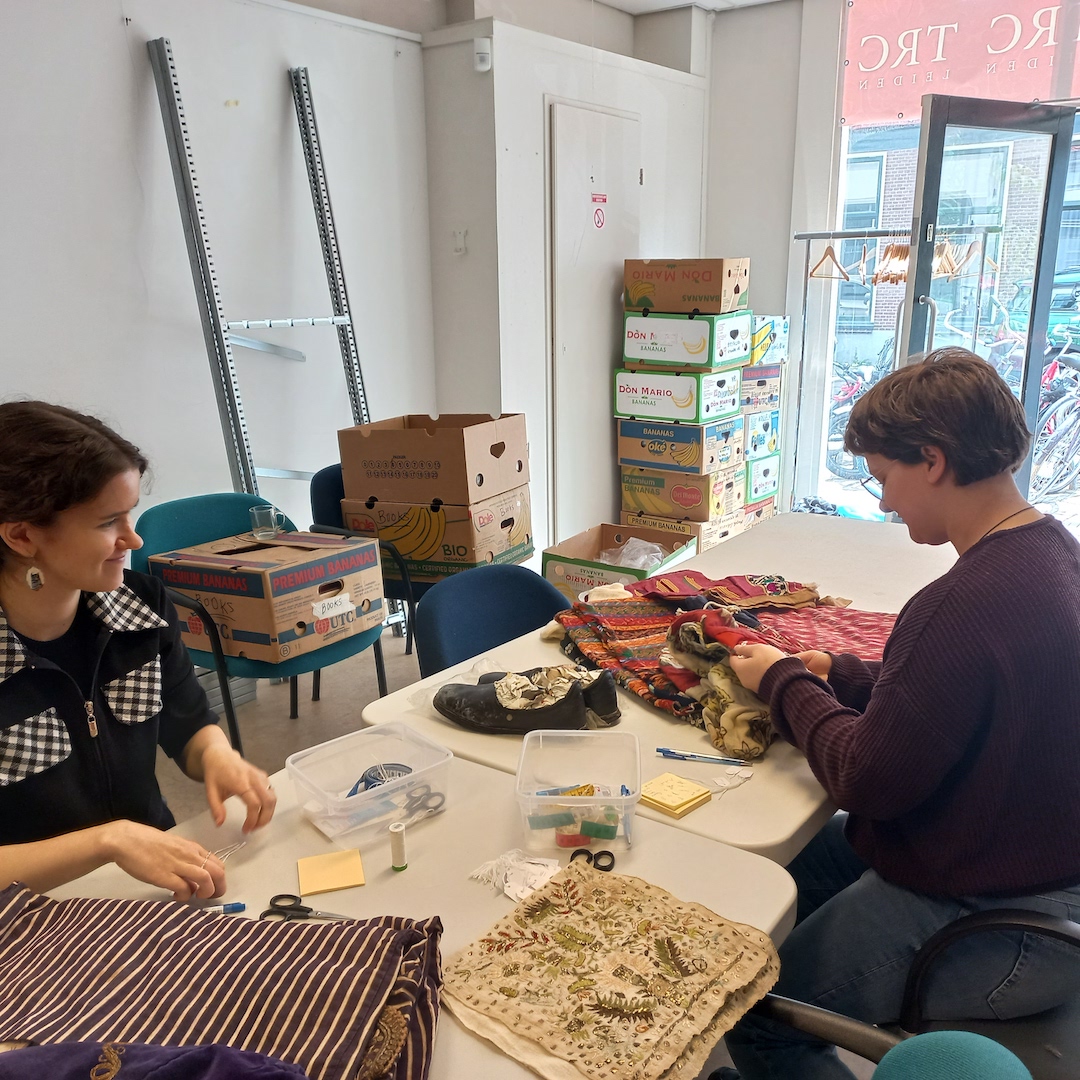 Fig. 1. TRC interns ctaloguing Turkish garments recently donated to the TRC (photograph by author).Followers of the TRC blogs will know that we have collected a first group of a large collection of Turkish garments donated to the TRC. Since then, a group of volunteers and students have been busy tagging, registering, and photographing the garments (see previous blog).
Fig. 1. TRC interns ctaloguing Turkish garments recently donated to the TRC (photograph by author).Followers of the TRC blogs will know that we have collected a first group of a large collection of Turkish garments donated to the TRC. Since then, a group of volunteers and students have been busy tagging, registering, and photographing the garments (see previous blog).
The theme of the collection is the Ottoman Empire, which covered, at its height, a vast area including Southeast Europe, West Asia, North Africa and parts of the Arabian Peninsula, from about 1299 until 1919. It still has an influence, beyond Turkey, on the material culture of much of the Middle East and parts of Eastern Europe, especially the Balkan region.
The first group, which we collected three weeks ago, included women’s outfits from Beypazari, Balikesir, Eskişehi, Keles, Konya and Seyi. The first 233 items are now online and there are many more pieces to be added to the database over the next month or so.

The other type of trousers is more tailored. It has a central crotch area with legs, giving more of an A-shape. This type is linked to Beypazari in Central Turkey (Fig. 3. TRC 2025.0802b). Several of the students are planning to make some of these trousers for themselves to wear.
I must admit I am particularly interested in the various forms, and indeed qualities, of embroidery. There are examples of pulled thread work and counted thread work (in both cases using a variety of stitches), as well as metal thread forms (bindalli), especially some dresses, jackets and baggy trousers using plate and passing threads worked over card templates (compare Fig. 4; TRC 2025.0802a). Some of the pieces date to the 19th century; others are more recent. But they all represent different aspects of Turkish needlework skills.

One of the outfits from Konya includes a winter jacket (Fig. 5. TRC 2025.0799l) that is lined with a patchwork of fur and we suspect (but with no proof, yet) that it might be bear fur. That is something we will investigate further as we build up the TRC’s fibres, fur and leather collection, which was the subject of an earlier TRC Blog.
One of those little whaaaah moments was brought about by the identification of a coin! It formed part of a necklace pendant (Fig. 6. TRC 2025.0797h). More specifically, the pendant was made up of a central silver coin that was very worn on one side, as well as five short chains ending in small Turkish coins.

Some more background information about the collection
On Sunday (15 June) Willem and I went back to Antwerp to talk with Jean-Marie Criel and his partner to find out more details about the history of their collection, and how we can work together. We sat in a quiet garden, with nesting birds flying overhead, talking about Turkish textiles. Bliss.

We talked about the collection, the range of items included and indeed the size of their collection. It turns out it includes about 7,000 items. But before I mentally ‘squeaked’, they added that many items were identical items and related to the dance costume section (a separate home has to be found for these). The collection has been divided into three: dance costumes, display outfits and the rest. The TRC will be given the outfits and the ‘rest’.
The first group that we collected and are currently processing included the women’s outfits. The next group to be collected from Antwerpen will be the men’s outfits and some general pieces, as well as individual garments from Georgia, India, Uzbekistan, Turkmenistan, Yemen, etc. These will be picked up in about a month or so’s time.
In addition, they have a large number of individual items, including embroidered, printed and woven items. Gradually, these are going to be put into boxes and at irregular intervals over the next 12 months we will be going to Antwerp to pick them up. We have agreed that the TRC can include these individual items in the collection or find new homes for them, etc.

We also have a growing collection of Central and Eastern European garments, including items from the Balkans, but many of the latter pieces do not directly reflect the Ottoman influences. There are in the Criel collection, for example, garments from the Burgaz. They are Bulgarians in origin, who converted to Islam and some of them went to live in what is now Turkey. Similarly, there are some groups of Turks who settled in Bulgaria, not to mention small groups of Armenians who still live in Turkey.
All in al, these garments and textiles reflect a world that no longer exists, but which still lingers on in different aspects of Turkish culture and that of neighbouring lands..
In the meantime, we have been in contact with Stichting Guney, a local Turkish community group in Leiden. We are also in contact with a Turkish student, Besime Alikişioğlu, from the Art Department of Istanbul University, who is currently working on an MA Museum Studies at Leiden University. She read the blog about the donation and immediately offered to come and help with the research into the various outfits and garments. In addition, she has offered to put us in contact with various groups in Turkey who might be willing to help. Perhaps there will be possibilities of Turkish students coming to Leiden via the Erasmus+ programme. Besime will soon be writing a blog about her impressions and the possibilities with respect to these additions to the TRC collection.
In other words, lots to do and study, as well as to think and talk about, with respect to the role of textiles and clothing during and after the Ottoman Empire, in all its multi-cultural forms.
Gillian Vogelsang-Eastwood, 2 July 2025










